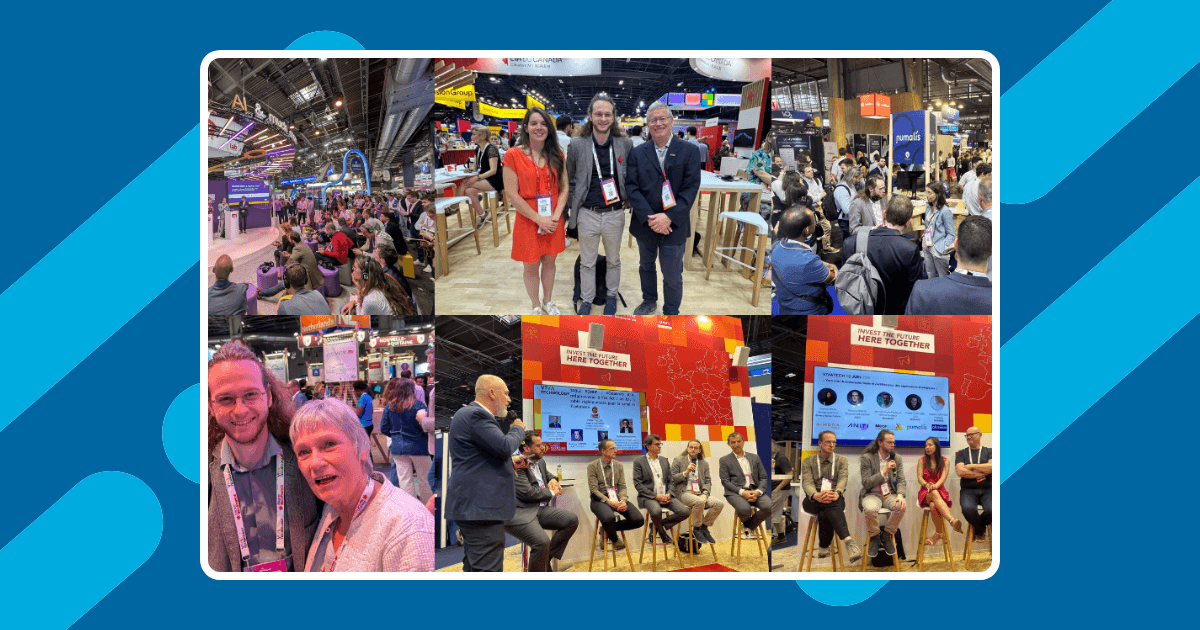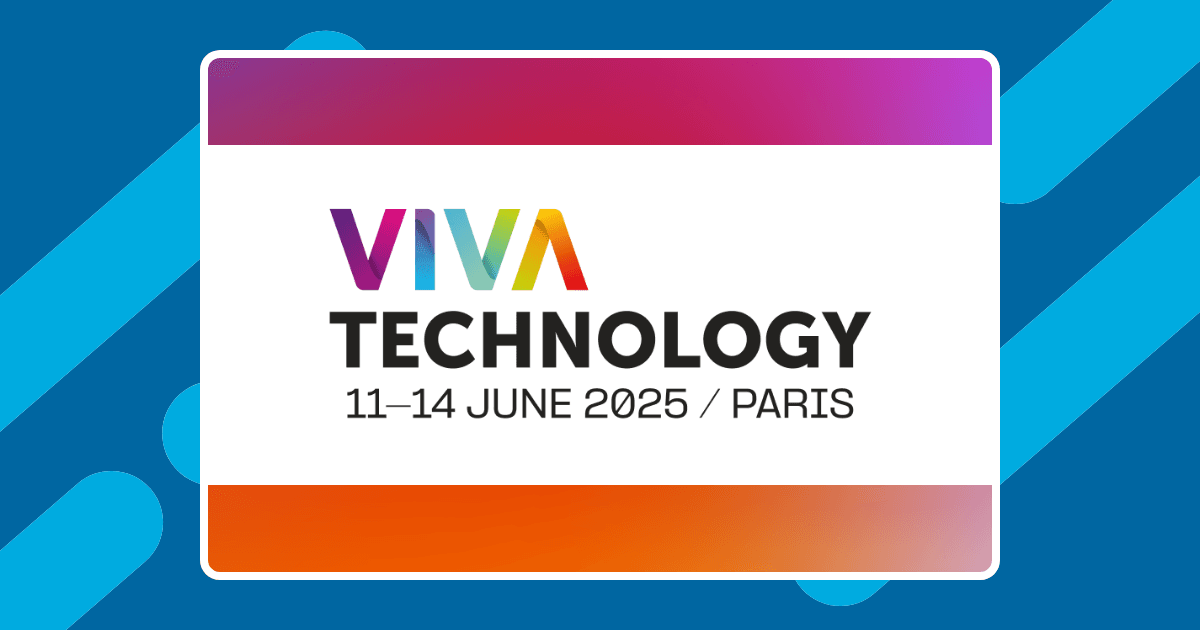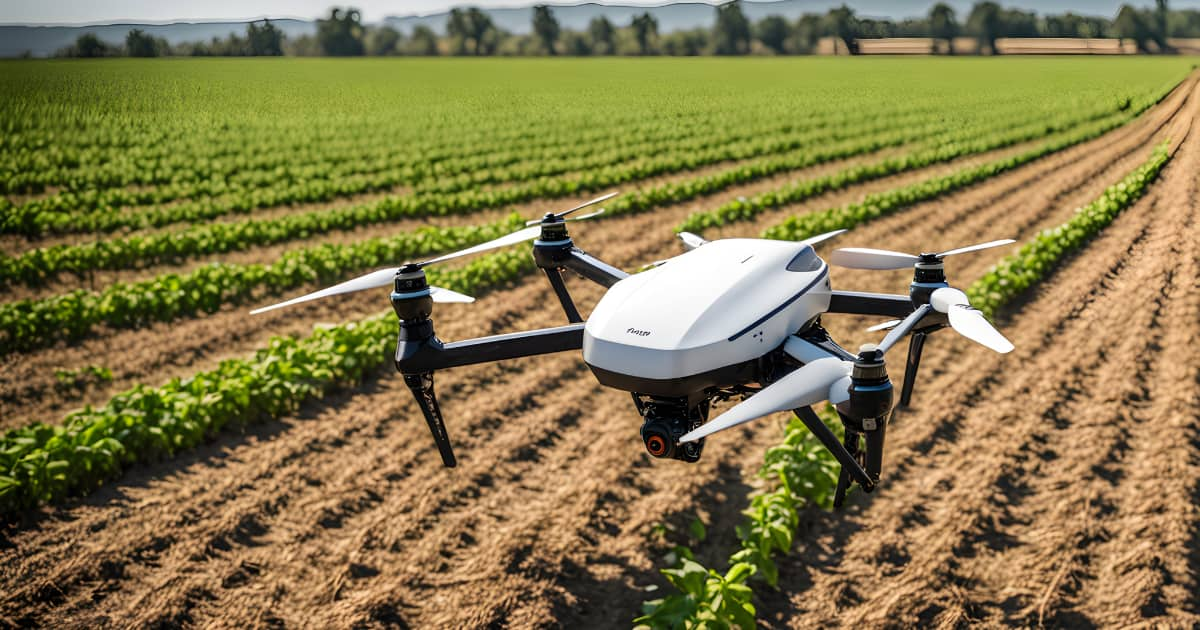The gaming industry is known for being forward-thinking, as when it incorporates and pioneers new technologies like Metaverse and Web3. Likewise, artificial intelligence(AI) has impacted the industry, from early pixelated games to the recent hyperrealistic games. But now, we may have reached a critical mass with the exponential growth of AI, with many gaming developers looking to increase the adoption of this technology.
From basic electronic gaming, the industry has grown to become a global and mainstream form of entertainment. In 2020, there were 3.1 billion gamers globally, expected to reach 3.6 billion by 20241. The current global gaming market size is valued at $281.77 billion. It’s forecasted to grow to $655.77 billion by 2030, with an expected CAGR of 13.1%(2023-2030)2. The use of AI is expected to spur this growth even more in both the long and short term.
AI found itself in the fabric of gaming early on with the creation of a game called Nim in 19513. That same year, the University of Manchester used a machine known as Ferranti Mark 1 to write a game of checkers and chess. This was done rudimentarily, with techniques such as rule-based programming for games aimed at beating experts.
However, the entire industry is now enjoying the benefits of advanced AI techniques. Developers can now use AI for different game dynamics, with capabilities to generate immersive games that offer unique experiences.
Our article explores the place of AI in the video game industry, primarily its evolution, impact, and implementation. We explore the key players driving this revolution and we also cover different areas where AI is used in the gaming industry and what the future holds.
Key players in AI integration in gaming
Here are some of the organizations making significant strides with AI integration in gaming.
Blizzard Entertainment
The gaming giant responsible for games such as World of Warcraft, Diablo, and Call of Duty has already integrated AI into its game development lifecycle. For example, the company has developed an internal generative AI tool called Blizzard Diffusion to automate concept art production4. It’s aimed at helping accelerate the creative process by leveraging game assets from previous projects.
Blizzard has also published a patent detailing a system that leverages AI to generate music in video games5. The system can potentially influence how video game music is produced. It also aims to provide each player with a unique audio experience based on their preferences.
The company has also made strides in generating AI-driven Non-player characters(NPCs). It has filed a patent detailing an AI-driven solution that will create NPCs with lifelike characters, enhancing game realism.
Ubisoft
The company runs a unit called La Forge that seeks to turn academic research into video game innovations. It believes the data and assets it has gathered in the last 20 years give it a unique advantage when training AI algorithms. A report states that the company’s creators and developers at all levels are currently taking advantage of generative AI in their work.
At the center of research, the company seeks to create more realistic NPCs capable of traversing complex worlds and lifelike reactions. In 2021, the team at La Forge presented their breakthrough in improving NPCs’ pathfinding and Navigation using machine learning6.
Riot games
The video game developer famed for the game “League of Legends” has been using AI to improve game balance, NPCs and community moderation. For instance, the company has integrated reinforcement learning into a tool that helps game designers on League of Runeterra to evaluate and refine game balance before releasing content7.
Developers at the company are also using AI to upgrade the bot decision making logic in games such as League of Legends8. By improving AI behavior, the company seeks to assist players hone their skills applicable against human opponents.
Additionally, Riot Games and Ubisoft have partnered together to find ways to tackle toxicity in games. Both companies look to use machine learning data to aid in developing an AI based preemptive moderation system capable of recognizing disruptive behavior in game9.
Roblox
Roblox is a platform that offers creators and developers end-to-end tools to create and publish immersive 3D experiences. The Roblox studio now has two generative AI tools for creators and developers.
By leveraging large datasets, these generative AI models can create unique content that can be shared across different platforms. The tool will help developers quickly generate game environments. Roblox also sees an opportunity to integrate third-party AI creation services directly into the platform10.
Microsoft
Microsoft offers a whole ecosystem with AI capabilities, from the Xbox to Azure. Game developers can use Microsoft AI-driven solutions to accelerate the creation of virtual worlds and challenges.
The AI-powered Bing has been integrated into the Xbox. The search engine is designed to help gamers find information about games or quests.
Like the other game studios, Microsoft is working on novel ways to increase game interaction through bots, NPCs, and other agents. The research focuses on reinforcement learning to develop in-game characters that collaborate dynamically with gamers11.
EA Sports
The company famed for its FIFA franchise seeks to use AI for multiple use cases. Multiple research publications show how far the company has progressed in looking for ways AI techniques can solve and enhance gaming. For instance, results from Neural Animation Layering for Synthesizing Martial Arts Movement aim to improve character fightings movements12.
EA Sports has used advanced AI techniques for its Madden NFL 22 game. This is because the company has precise data from the NFL league coupled with increased computational power from game consoles. FIFA 22 also uses AI, arming NPCs with tactical AI to defend and attack appropriately.
Nvidia
The company produces GPUs and drives advancements in gaming and AI. Additionally, the company is developing products at the intersection of AI and gaming. For instance, NVIDIA’s Avatar Cloud Engine(ACE) for games is a specialized AI model foundry service designed to elevate gaming experiences. ACE powers NPCs through AI-powered natural language interactions13.
The rise of specialized AI gaming companies
Recently, there’s a rise of specialized AI gaming companies taking advantage of the technology to influence how games are developed and played.
Here are some examples:
- Inworld AI: Game developers can use this character engine to develop AI powered NPCs. The characters can be configured to have different personalities, express emotions in response to users and audio14.
- Modulate: This company uses advanced machine-learning techniques to offer voice-native moderation solutions. The Toxmod feature analyzes voice chat and flags toxic conversations and bad behavior among players15.
The timeline of AI in video games
AI has been used in video games for several decades now. This is because of increased research around the tech and an improved understanding of ways it can be applied in real life.
Here are some notable events that helped shape the use of AI in video games:
- 1980s: AI algorithms get integrated into games like “Pac-Man”.The game featured an AI-controlled enemy with unique behavior.
- 1990s-2000s: Popularization of techniques like finite state machines(FSM) due to the ability to provide a structured way to control in-game characters. During this period, FSM became a great tool for real-time strategy games(RTS).
- 2000s-2010s: The use of behavior trees started gaining momentum during this period. They help control the behavior of in-game entities in complex and interactive game environments.
In 2010, Starcraft 2, an RTS game, featured battles between AI and humans. The bots in the game used multiple techniques and approaches, such as rule-based systems, which subsequently led to the introduction of agents that could mimic human behavior. Other games like Supreme Commander 2 started using approaches like neural networks to control the response of in-game characters16.
From the 2010s onwards, numerous techniques continue to be deployed in games on a need basis. Game studios continued integrating newer approaches, such as decision trees, to help NPCs respond appropriately and pathfinding algorithms for navigation. Renowned entities, such as Google, continue to push the boundaries of research into the field while introducing novel approaches to different problems.
For instance, the development of AlphaGo, that was used to learn to play a game called Go and defeated a world Go champion named Ke Jie in 201717. A variant of DeepMind’s algorithm was used to learn to play video games and defeated a starcraft human champion in 2019. DeepMind’s showed significant progress in using reinforcement learning and deep learning in decision-making for games. More recently, Google made research on Generative Agents to automatically train NPC in simulating human behavior and creating unique adaptive background stories, making their in-game behavior feel more human-like18.
Current game development trends aim to implement more realistic NPC behavior. Developers look to add a depth of realism and complexity to mimic intelligence to increase game immersion.
Going forward, there’s a lot of excitement in the industry about using generative AI and generative adversarial networks(GANs). The game industry is looking to integrate these into their working pipeline to harness the ability to quickly generate assets, among other benefits.
Nonetheless, in-game NPCs have evolved little in their performance, especially their skill. This is particularly true when using deep neural network techniques, which can make AI agents learn and evolve, producing unexpected behavior. The player experience and game predictability are critical aspects for game designers and according to Professor Togelius, using deep neural networks and evolutionary computation in AI can lead to unpredictable outcomes, which poses a challenge for designers19. The complexity of implementing NPCs trained using neural networks is another obstacle that is often circumvented by preferring other methods.
Also, in versus modes, it was intended that NPC AIs should not evolve much, at least not in their performance, but perhaps in their behavior. As for example, having a more human-like behavior but no superhuman skills in shooting games20. In particular, there is no ML in AI versus because there would be no fun, the AI would just be too strong, or even unbeatable. One exception regarding ML in versus with Forza21 and its vehicle driving, which is very complex and requires some Deep Learning (DL) for the AI to learn how to drive the car properly.
Different arenas of AI application in gaming
The use of AI in the video game industry spans different areas, enhancing the overall delivery of video games.
Industry players like Unity CEO are upbeat about using AI in game development. The CEO foresees a tenfold transformation in gamer experience, similar to the transition from 2D to 3D or the rise of mobile gaming22.
Below are some key areas where AI is pushing innovation boundaries in gaming.
Generative artificial intelligence
Generative AI has bust into the limelight, showcasing the ability to generate different outputs such as images, texts, voice, and videos, from text and other forms of inputs. The impact of generative AI on the gaming industry was valued at $922 million in 2022. Estimates put the value at over $7 billion by 2032, at a staggering CAGR of 23.3%(2023-2032)23.
At a high level, generative AI relies on multiple techniques, including deep learning, machine learning, and neural networks, to generate output depending on the training dataset and input.
Much of the focus on generative AI has been on streamlining and speeding up the production pipeline by game studios.
Here are some of the possibilities of generative AI:
- Generative AI tools will affect the efficiency and speed of game creation. Artists can automate mundane and time-consuming tasks. Developers can quickly create vivid visual effects, characters, levels, and environments.
- It’s also possible to carry out quality assurance and tests powered by generative AI. Developers and QA engineers create test cases to identify and rank bugs.
Procedural generation AI
Procedural generation uses algorithms to generate content dynamically. Combining procedural generation and AI introduces limitless possibilities for gamers to interact with responsive and dynamic games. It’s possible to make each game instance a fresh adventure by generating new levels, maps, and quests to enhance replayability and exploration.
Some of the popular games that have used procedural generation AI are:
- No Man’s Sky: This is a game about the exploration and survival in unique galaxies generated through procedural generation. The game publisher used AI algorithms to generate an infinite number of planets. The algorithm generates the levels and environments on the fly, ensuring each player enjoys a unique experience.
- Spelunky 2: This game developed by Mossmouth is a unique platformer game using AI to generate numerous levels procedurally.
In-game AI (NPCS)
Non-player characters are a way game developers provide players with opponents, companions, or allies, enhancing the game’s overall experience. Initially, games provided NPCs with scripted behaviors, predetermined dialogue, or simplistic pathfinding algorithms.
A report detailing gamers’ attitudes towards NPCs shows a high level of excitement for its potential. Out of 1000 participants of this survey in the US, 99% believe that AI-powered NPCs would positively impact gameplay. Furthermore, 81% of the respondents were willing to pay for such an experience24.
Unlike their predecessors, AI-powered NPCs are lifelike and capable of interaction and learning. Gamers can expect characters that adapt to current action, creating a more realistic experience and a sense of connection.
Game studios have been using finite state machines and decision trees to program NPCs’ behaviors and action sequences. Developers could give the characters states like idle, alert, and active and a set of conditions that resulted in a change in state. The transition would depend on whether a specific condition was triggered in the game.
Unlike the use of finite state machines, AI-driven NPCs can learn and adapt from a player’s moves. They can analyze their virtual worlds and even have sub-missions. They can go through their environment and conduct activities such as exploring and trading on their own, giving a better feeling of life.
Developers can also use AI to help them model character behaviors. This would essentially determine how the character would react to certain situations, move or interact with their world. Pathfinding algorithms can help NPCs find the best route to use.
Another way AI is transforming NPC is through dialogue capabilities. This is by using Natural Language Processing(NLP) and in some cases voice recognition, that gives NPCs the ability to understand and respond to players. Verbal engagement can be done through textual commands or voice commands, resulting in context-aware responses adding fluidity to the game.
Companies like Convai are helping developers create in-game characters with human-like conversation capabilities. The characters can have open-ended voice-based conversations and carry out action25. Other startups like Inworld add a layer of advanced behavior to NPCs. This adds depth and realism to the characters, mimicking the full range of human expressions, from conversation to emotions26.
A game like Middle Earth: Shadow of War uses some level of AI for the enemy orc. The orcs have different characters coupled with different abilities. For instance, an orc can betray, spy, and even join forces with you27.
Balancing and analytics AI
AI and machine learning can play a pivotal role in game balancing and analytics.
Creating balanced matchup and adaptive difficulty
It’s possible to integrate AI into games such that it provides balanced and competitive gameplay. This can be through balanced matchups or adaptive difficulty.
Advanced matchup algorithms can help find suitable challengers, especially in multiplayer online games. Apart from the basic parameters such as win ratios, AI can delve deeper and check the player data such as accuracy, latency, region, reaction time, win rate, and other metrics to determine the skill level. This can help in matching up a player with better challengers who are within their skill metrics.
It is also possible to use AI techniques to analyze a player’s behavior and adjust the difficulty to improve the experience. The system records metrics such as progression speed and skills for player performance analysis and then uses that for real-time difficulty adjustment. Developers can use the dynamic difficulty adjustment concept to continuously monitor a player’s metrics and adjust the game parameters dynamically.
Testing games
Testing and debugging games is a fundamental aspect of the overall development and significantly impacts the gameplay experience.
AI-enhanced video game testing aims to automate the process, leading to faster and greater efficiency than manual testing. AI-driven testing tools can simulate multiple scenarios to identify bugs, glitches and playtest quickly.
Game testing is tedious and time-consuming and takes considerable time in game development. For instance, AAA game development may take three to five years, with lots of time required for proper testing28.
AI can be used to automate processes such as functional and regression testing. It’s also possible to set up tests to detect bugs, glitches and analyze player behavior. Machine learning algorithms can analyze the code and identify patterns that could lead to abnormal occurrences in the game. Additionally, AI can help testers simulate and test different scenarios ranging from network latency to device performance.
Reinforcement learning can also be used to test games by using an AI agent to play the game. In the process, the agent identifies bugs and other anomalies. This can help free testers to handle different tasks and reduce the time required for testing.
Detecting cheating and fraudulent activities
It is possible to use AI to detect cheating activities in video games. This involves anomaly detection techniques, identifying outliers from data from players. For instance, the AI system could detect a player who makes an abnormal number of kills in a shooter game.
Machine learning can also be used to identify patterns of players who cheat. Once a model is trained, it can single out instances where it detects cheating from previously known patterns.
There’s also a rise in fraudulent activities in gaming. This presents a problematic position for gaming studios because it may lead to devaluing of in-game products or cause players to lose interest in a game. It’s possible to use machine learning to train models based on datasets available to identify and flag fraudulent activities and even escalate them.
Making data-driven decision
Game studios can use AI to help in decision-making in multiple areas. With machine learning algorithms, it’s possible to analyze corpus amounts of data to identify trends and behaviors of players in games. The insights from the analysis can help game studios determine the success of particular game genres, help to make predictive analysis, player behavioral analysis, personalization, and much more.
Companies like GameAnalytics have carved out a niche by using data to provide insights for game studios29. Through the use of AI, the company uses data to help its clients make informed decisions.
AI-powered game engines
Game engines provide developers with the tools and frameworks to build games. AI can be used to train neural networks that create components such as graphics renderings and physics engines automatically.
GameGAN is an example of an AI-powered game engine. Nvidia’s GameGAN engines are similar to traditional ones, boasting all components and even a memory module. It uses various neural networks such as GANs, Neural Turing Machines, and LSTM for coding. With this engine, Nvidia could recreate the Pacman game, even determining the static and dynamic parts of the game30.
Management AI
There are multiple ways AI can benefit the administration planning and project management of game development. Gaming studios can use AI tools to guide optimal resource allocation and task scheduling. Additionally, it’s possible to use AI techniques to help in risk assessments by identifying project risks based on previous data and current parameters.
Companies such as GameRefinery offer game studios the ability to track LiveOps for their mobile games. This includes a way to concentrate resources where they are needed most, revenue-boosting, and methods to analyze events to a granular level. The company uses machine learning-based models for benchmarking against market trends31.
Benefits and challenges of AI in gaming
There are many benefits that game developers and studios can accrue by integrating AI and AI-based tools in game production pipelines. However, as AI promises to influence almost all gaming categories, other stakeholders continue to express valid concerns about using AI.
Currently, the benefits of using AI far outweigh the drawbacks, and that’s why many AAA and indie studios continue to use the technology. Here are some pros and challenges of AI in gaming.
Benefits
Overall game development improvement
Game development consists of seven rigorous phases, with production being the longest and most resource-intensive stage. A combination of artists, writers, designers, and developers are involved in efforts to give the game life. The use of AI is significantly pronounced in this phase across game creation, storytelling, and graphics.
Enhanced game creation process
AI can help developers be more productive, accelerating game creation and complementing workflows. It’s now possible for developers to create new features and capabilities that were not possible previously.
AI-powered solutions promise to make creating and editing game assets easier, even through text prompts, using generative AI.
Overall, AI tools can help creators reduce the time and budget required for development. This is by reducing the man hours needed for designing game characters, levels, and other activities across the entire lifecycle of game production. They also add an element of creativity by allowing developers and engineers to test new game mechanics.
Unity Sentis is a great example of an AI-powered platform that uses neural networks in projects. It promises novel game developers the ability to start quickly and build real-time experiences32.
Ivy Juice Games, a game studio based in Berlin, uses AI throughout its game creation. AI collaborates with developers to code, storytell, and generate text.
Enhanced storytelling and prototyping
AI-powered tools already help artists and creators quickly spin up game concepts and assets. This can help cut the time required to formulate good stories or prototypes, allowing teams to iterate multiple times.
Making complex game scenarios
Game developers must contend with how specific inputs and in-game characters influence each other. It can sometimes get complex, untangling what will result from in-game characters’ behavior. With AI-powered game engines, developers can abdicate the intricate task of creating finite state machines for production pipelines.
Reduced costs and time
Techniques such as generative AI can save time and money by automating mundane tasks, such as asset creation, level design, and even bug testing. These are tasks that take a lot of effort and time. According to Egor Piskunov, the head of development at iLogos Studios, generative AI simplifies the iteration process by generating and refining game content, making it easier for developers to experiment and iterate their ideas.
Enhanced player interaction
AI can help developers model and embed complex game systems. Games can render textures and other objects dynamically while creating the universe on the fly. Deep neural networks(DNN) can determine the optimal color details for each pixel, enhancing the visual quality of small images that have been manipulated.
Adaptive storylines
AI could make games adapt to their users, offering storylines and difficulty levels that suit a player. A DNN model can be trained to adjust the content and difficulty levels that make the game more fun. This can help games be more immersive, helping players stay in the game.
Improved NPC behavior
Upgrading NPCs’ behavior is perhaps the biggest advantage developers will draw from AI. NPCs can now have unique personalities and backstories, interacting with players in real-time.
Enhanced user experience and satisfaction
In addition to enabling intelligent NPCs, AI can help create more responsive and dynamic game worlds, improving the overall gaming experience. AI can power voice interactions between in-game characters and players through NLP and speech recognition. Moreover, AI can help increase game realism, improve game mechanics, and dynamically adjust difficulty levels based on the player.
Challenges
Despite the benefits, there still exist challenges with integrating AI into game development. Here are the main issues.
Copyright concerns
AI can be used to create storylines, quests, music, and other game assets. This again raises questions about intellectual and copyright issues, especially on the data used for training and even the output. For instance, assets from generative AI may inadvertently resemble copyrighted material, which could lead to legal issues.
Steam, a gaming platform, has been rejecting games that use AI-generated assets without clear IP rights. Steam’s creator stated that developers must prove ownership of the IP used to train the AI before games with AI-generated content can be released on the platform.
Privacy and security concerns
AI-powered games continue to collect and analyze player data, such as behavior and preferences. The storage of personal data in models makes them possible targets for hackers.
Game studios must also ensure that players are adequately informed about data practices and usage of their data. Additionally, players’ data must be anonymized to mitigate the risk of data breaches.
Job displacement fears
According to a survey by CNBC in the US, 24% of workers in the country fear AI will make their jobs obsolete33. Using AI to automate some tasks, such as in testing and procedural content generation, could lead to job loss fears.
The dawn of a new era in video games?
AI tools and techniques promise to bring lots of changes to how video games are made and played. For developers, they usher an era of greater freedom in formulating, designing, and iteration. Gaming studios are bound to enjoy cuts in time and budget, while players are looking at an era of video games with highly enhanced graphics, immersion, and personalization.
There’s an expected surge in the number of indie developers as game engines integrate powerful AI tools to make development work less laborious. Procedural content creation, character customization, sound, music, and dialogue will now be easier to create, cutting both man-hours and budget. The effect is that the industry will see a rise in new games while AAA games get even better.
Here are some other pointers to why AI promises a new era in the gaming industry:
- The use of AI in procedural content generation
- Enhancement of graphics
- AI-driven NPCs with dynamic behavioral properties
- Personalized player experience
- Voice and speech capabilities for players and in-game characters
- Testing and quality assurance
Merging AI and human creativity
The collaboration between humans and AI in the gaming industry is dynamic and is likely to change rapidly. As researchers pursue new AI techniques and game studios integrate AI tools into their working pipeline, there is still a lot left in this space.
AI techniques, such as Neural networks and machine learning, have a place in game development. Different types of these techniques perform better for specialized functions, for instance, neural networks such as GANs are used for image generation, while NLP is utilized for making dialogue more human. But it’s not a single AI that makes an entire game.
It’s, therefore, imperative to use the synergy between AI and humans to enhance productivity and output in game development. As such, Unreal Engine 5 has integrated AI for debugging, behavior trees, and AI perception34. However, the role of human creativity is currently indispensable. Designers, developers, writers, and even project managers shape the overarching game identity, including the game mechanics, tools to use, and aesthetics. AI tools may generate game levels; however, humans add more intricate details.
In an interview, Rami Ismail, game developer and co-founder of Vlambeer, believes that human creativity is currently irreplaceable by AI35. The way jobs are carried out should change, but AI and humans will work in collaboration.
Technological development of the gaming industry
The gaming industry has always been where new technological advancements find a home quickly.
Cloud gaming
Cloud-based games are hosted on remote servers and streamed directly to the player’s device. Players can, therefore, avoid purchasing expensive gaming consoles or PCs. They also avoid stocking large amounts of data. Progress data and other game properties are saved automatically, and players can access their games on different devices.
Some popular cloud gaming platforms include Amazon Luna, and Xbox cloud gaming. These platforms use AI for game recommendation, fraud prevention, and reducing latency. For instance, although now shutdown, Google addressed latency issues in its Stadia gaming platform using “negative latency”36.
Blockchain games
The crypto gaming landscape is growing exponentially, with $2.2 billion invested in Q1 of 202237. Blockchain games are online games that leverage non-fungible tokens(NFTs), smart contracts, and the metaverse.
The biggest draw to these games is the in-game economics, which allows players to play and earn simultaneously. Players can also buy and trade in-game assets such as NFTs and cryptocurrencies that can be exchanged for flat currencies.
Combining AI and NFTs will likely give rise to new levels of creativity and sophistication in creating and monetizing in-game content. It could enable to develop better and more appealing game assets.
Immersive AI interaction
The infusion of AI into games is expected to drive game immersion. As explained, Games with AI-powered NPCs will have better behavioral aspects and better interaction. Additionally, AI is also used to enhance realism of experiences offered on virtual reality(VR), mixed reality(MR), and augmented reality(AR) devices, giving users even better interactive experiences.
New immersive technologies such as haptic, motion simulation devices and sensory stimulation devices will pave the way for extended immersion and should also work with AI to give a truer sense of reality to interactions with the in-game environment. Getting started, combining VR with computer vision is used for player tracking, where a player’s real-world movements are translated into the virtual world.
Also, the use of AI in gaming and film is now blurring the line between the two industries, reducing the line between reality and fiction. VR/AR devices powered by AI create immersive experiences that merge the film of realism and the virtual world.
Conclusion and the road ahead
There are countless use cases of AI in the video games industry. Exciting examples range from AI-powered NPCs that are highly advanced and lifelike to AI solutions in game engines. Key industry players and startups are all looking into ways AI could influence the game industry. Currently, exciting tools, such as Unity’s Sentis and Modulates’ voice solution, give a glimpse of AI’s exciting influence on the gaming landscape.
However, it is imperative that as the gaming industry continues to adopt AI, careful consideration is taken to ensure the beneficial exploitation of the tech in an ethical way. This could go a long way to ensure the industry reaps the positive benefits while sidestepping the drawbacks.
The use of AI heralds a new dawn for the gaming industry. Going forward, AI techniques like generative AI and GANs will likely have an overarching effect on video game production pipelines. The expected results are higher quality games, ease in asset creation, and reduced time and development costs.
Sources
- Gaming Industry Trends 2022: Streaming, AI, AR—all on cloud | Google Cloud Blog ↩︎
- Gaming Market Size, Share & Growth Revenues [2030] ↩︎
- History of AI Use in Video Game Design – Big Data Analytics News ↩︎
- Blizzard Trains Image Generator as A.I. Pervades Video Game Design – The New York Times ↩︎
- Activision Blizzard Using AI-Generated Music in Video Games | by ODSC – Open Data Science ↩︎
- Ubisoft La Forge – Pushing State-Of-The-Art AI In Games To Create The Next Generation Of NPCs ↩︎
- Riot Games and deep reinforcement learning in gaming | Anyscale ↩︎
- Riot Games is set to improve AI and bots for League of Legends ahead of mid-season 2023 ↩︎
- Riot Games and Ubisoft Tackling Toxicity in Games With New Project ↩︎
- Generative AI on Roblox: Our Vision for the Future of Creation ↩︎
- Project Paidia: a Microsoft Research & Ninja Theory Collaboration ↩︎
- Neural animation layering for synthesizing martial arts movements | ACM Transactions on Graphics ↩︎
- NVIDIA ACE for Games Sparks Life Into Virtual Characters With Generative AI ↩︎
- Inworld AI ↩︎
- ToxMod | Proactive, Voice-Native Moderation for Games ↩︎
- Using Neural Networks to Control Agent Threat Response ↩︎
- Google AI defeats human Go champion – BBC News ↩︎
- Generative Agents: Interactive Simulacra of Human Behavior ↩︎
- How artificial intelligence will revolutionize the way video games are developed and played ↩︎
- How often are neural networks used for video games ML or AI? Why is this the case? – Quora ↩︎
- How Forza’s Racing AI Uses Neural Networks To Evolve | Ars Technica Video ↩︎
- https://www.forbes.com/sites/johnkoetsier/2023/05/23/unitys-project-barracuda-injects-generative-ai-into-games-to-kickstart-exponential-growth/?sh=48a803ce703a ↩︎
- Generative AI in Gaming Market Share Report by 2032 ↩︎
- Inworld AI: 99% of gamers are excited by the potential of smart NPCs powered by advanced artificial intelligence ↩︎
- Convai ↩︎
- Inworld AI ↩︎
- The Future Of AI In Gaming ↩︎
- How Long Does it Take to Make a Video Game in 2023? ↩︎
- GameAnalytics ↩︎
- Can AI Replace An Entire Game Engine? (Nvidia GameGAN) | by Chintan Trivedi | deepgamingai | Medium ↩︎
- Is Your Game Ready for Its Big Premiere? – Using the Game Analyzer to Make Your Game the Star of the Show ↩︎
- Introducing Unity Muse and Unity Sentis, AI-powered creativity | Unity Blog ↩︎
- These are the American workers most worried that A.I. will soon make their jobs obsolete ↩︎
- AI Perception in Unreal Engine | Unreal Engine 5.0 Documentation ↩︎
- Rami Ismail interview: Indie creativity, games and politics, dirty funding and getting back to making games | VentureBeat ↩︎
- Google Stadia’s Negative Latency AI Predicts Own Failure – The Option Select ↩︎
- 14 Best Crypto Games to Play in 2023 ↩︎







